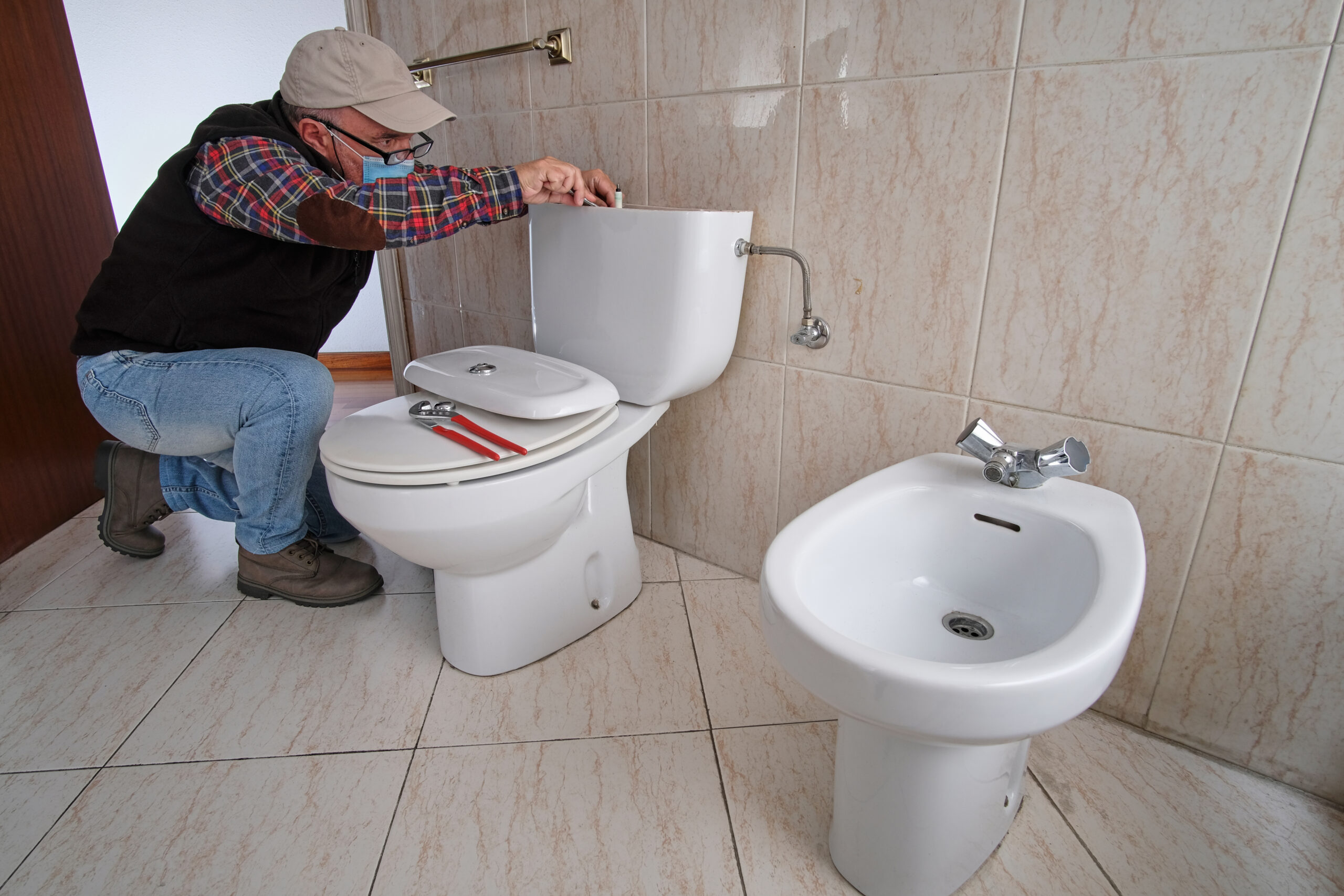If you take the lid off your toilet and look into your tank, you may see styrofoam surrounding the inside of the tank. If you see this, you have a lined or insulated toilet tank. If not, your tank is unlined or uninsulated.
While most toilet tanks are unlined, there is a reason why you might choose an insulated tank.
A toilet tank insulated with styrofoam will help to prevent the tank from developing condensation due to the differential between the cold water in the tank and the warmer and often humid air in the bathroom. This situation is exacerbated during hot humid weather in the summer.
This water can drip on the floor causing both a mess and possibly damage to the floor so it’s important to address the problem which you can do in several ways.
What benefits does an insulated toilet tank offer?
The main benefit of an insulated toilet tank is to prevent the outside of the tank from sweating from condensation. This is typically caused during a hot summer day when the hot outside air meets cold water inside the tank. In this instance, the tank can sweat and drip onto the floor making it look like you have a leak.
The insulation prevents water inside the tank from actually touching the tank and prevents the condensation from occurring.
Does an insulated toilet tank protect against a leak?
It’s possible that an insulated toilet tank could protect against a leaking toilet tank but toilet tanks generally don’t suddenly crack and break on their own. If something falls on a tank and breaks it, it’s likely that styrofoam won’t be enough to prevent a leak or flood.
The main reasons that a toilet leak occurs is because:
- The water connection hose that supplies water bursts from the water pressure. While the bendable steel pipes are generally reliable, there are some brands of weaved hoses that have been known to burst and cause floods.
- The connections at either end of the water connection hose start leaking. Over time the seals inside the hose can deteriorate and it’s also possible over time the hoses become a bit loose and may leak.
In this regard, it’s important to note than the main reason for an insulated toilet tank is to protect against condensation and not a leak.
Can I insulate my toilet tank myself?
You can try to insulate the inside of your toilet tank yourself with a toilet tank insulation kit. These exist for this purpose to make the work a DIY project requiring only a knife to cut the liner to size.
Anti-condensation toilet tank liners are made from foam with an adhesive on the back to stick to the inside of the tank. You empty the tank completely and allow it to dry before installing the liner. The actual process of lining the tank is probably a 20 minute job.
While you can pick up a kit for under $40, whether or not the adhesive holds for more than a few months is another story depending on the quality of the kit you buy.
You can also replace your toilet tank with an insulated one or replace the entire toilet with a new one that includes a lined tank. It’ll cost more but will also last longer.
Why does my toilet tank sweat in the first place?
Condensation can occur on your toilet tank when the water inside your tank is colder than the air outside the tank in your bathroom. The water in your toilet tank is generally cold to begin with and the hotter the outside temperature, the greater the differential between the two and more likely the tank will sweat.
The situation is made worse when you shower or bathe and the steam from the water increases the humidity in that room.
Plus, in the middle of a hot humid summer, the situation can get worse still.
How to prevent your toilet tank from sweating
The most obvious permanent solution is either self insulate your unlined toilet tank or replace your current tank with an insulated one.
To replace just the tank will most likely cost between $80 – $200 for the tank itself and labor. It might be worth just replacing the entire toilet at this point especially if you have an older one that uses more water.
There are other things you can do to rectify the actual problem in the first place i.e. why your toilet is sweating to begin with:
- You could try to decrease the temperature and humidity in your home and keep it at a certain level through air conditioning, since AC is a dehumidifier. It lowers the heat and humidity in your house.
- Always use the fan in your bathroom when having a shower or bath or otherwise running hot water.
- Keep your bathroom window closed during the summer since humid air from outside would enter your home and make things worse. Use the bathroom fan instead with the window closed.
- Leave the bathroom door open after your shower to air the room and keep the fan running for 10 minutes afterwards to remove moisture.
- If possible, take shorter and cooler showers on particularly humid days to minimize the humidity you cause each time you bathe.
If you’re trying to figure out how to fix the condensation problem with your toilet and need some time to sort it out, you can put something underneath the tank to mop up water to avoid damaging the floor.
You can also wipe down the toilet tank when you see it perspiring until you can solve the problem.


